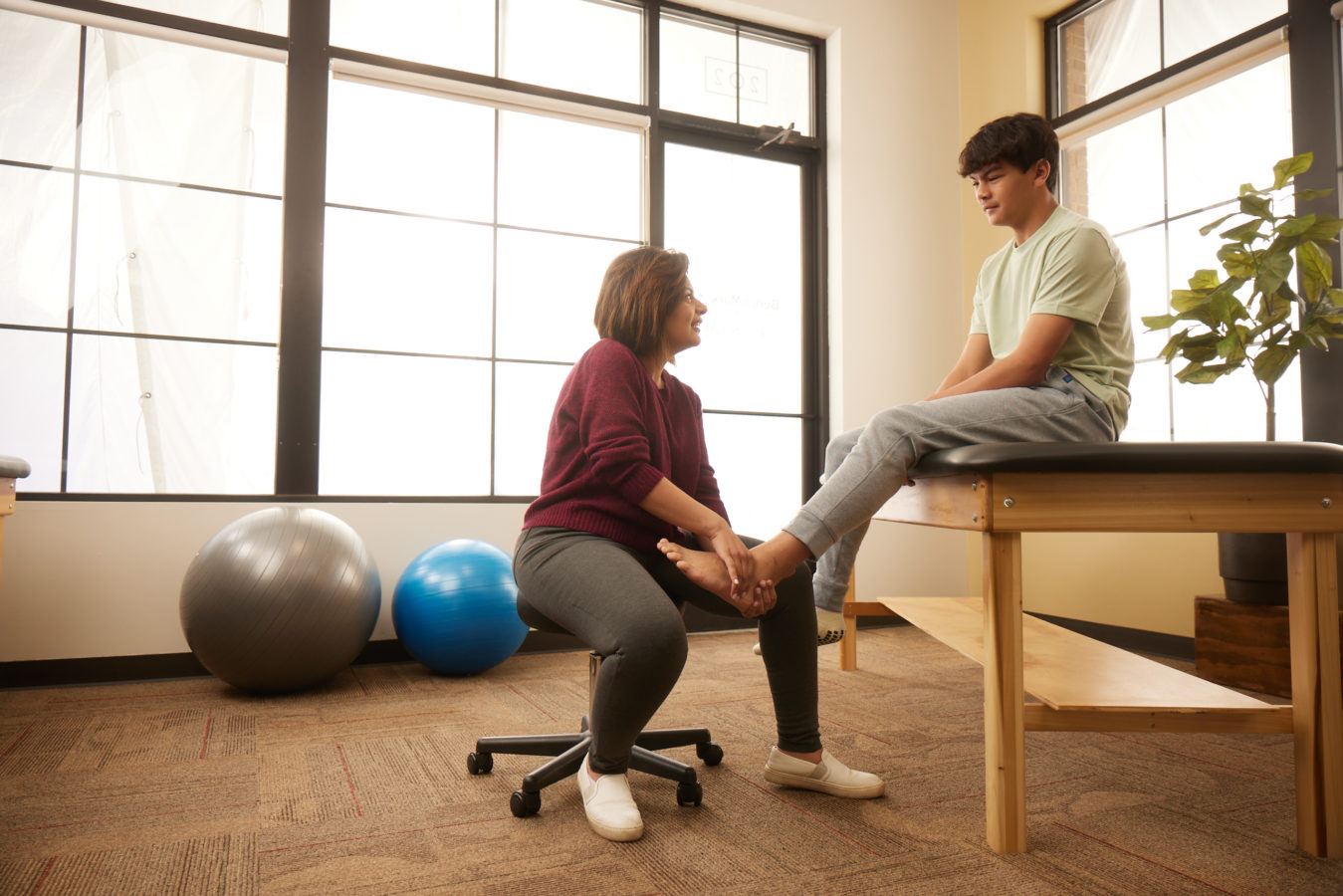
Like carpal tunnel syndrome in the hand, tarsal tunnel syndrome happens when a nerve is compressed in the ankle.
Tarsal tunnel syndrome (TTS) happens when excess pressure is put on the tibial nerve, which runs through a canal inside the ankle.
If you’re experiencing TTS, you may feel shooting pain in the foot, numbness in the toes, pain or tingling over the base of the foot/heel, or ankle pain and cramping. You may also notice that your symptoms get worse with prolonged activity.
Physical therapy for tarsal tunnel syndrome is a practical approach to reducing the severity of symptoms and increasing quality of life.


The first step in treatment for tarsal tunnel syndrome is to complete a thorough examination of the entire lower extremity. From there, we’ll apply a wide variety of treatments to reduce pain or irritation and correct any issues. These may include:


*Services are not available at every location. Visit our Locations page for more details.